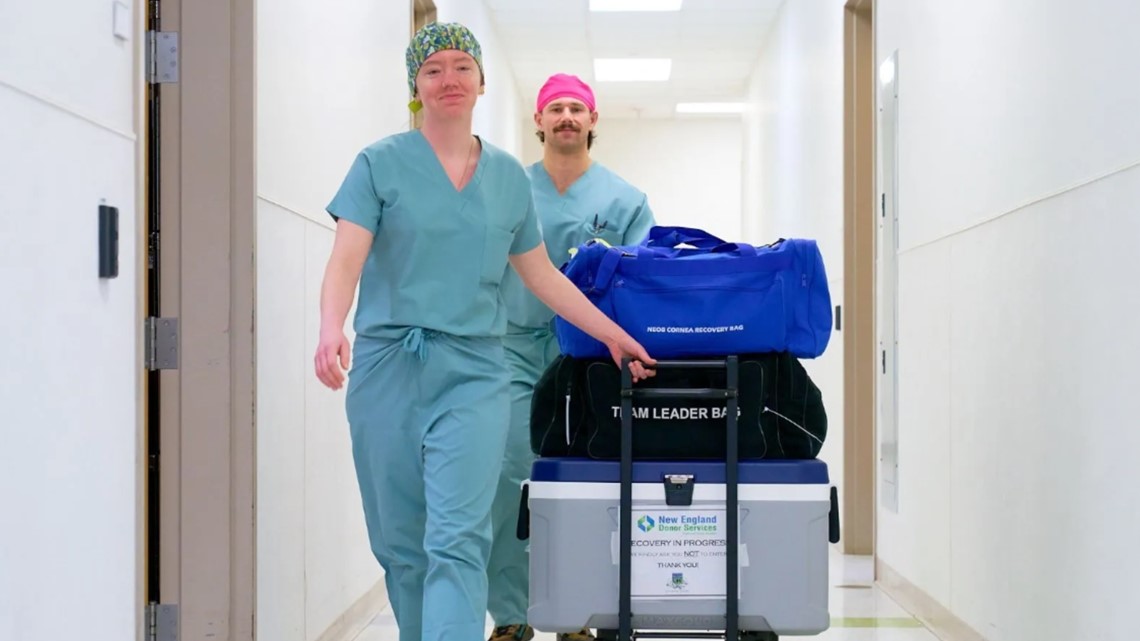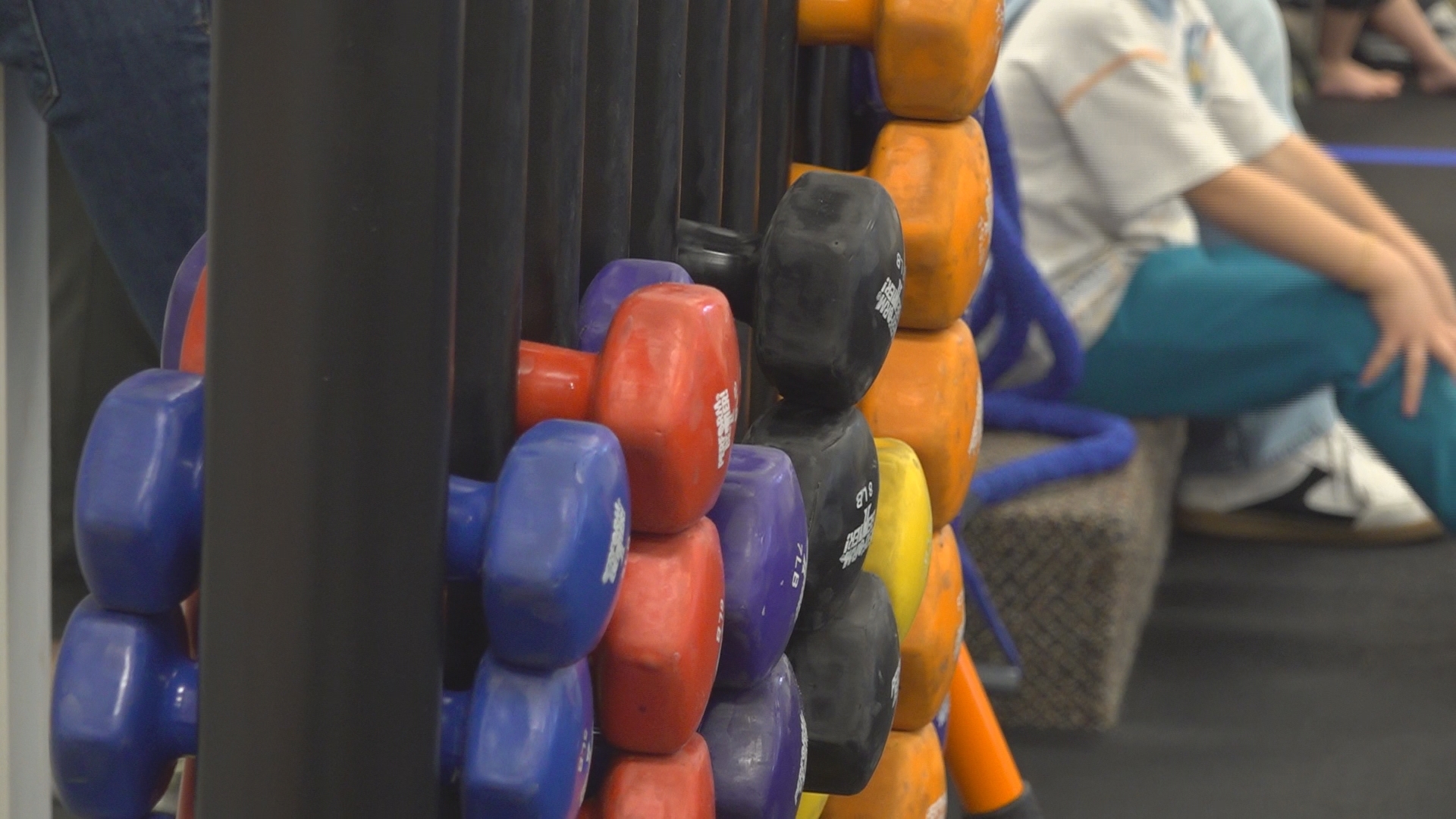MAINE, USA — The nonprofit responsible for managing organ donation in Maine and New England could be at risk of losing its certification if it doesn’t meet recent federal requirements to increase donor and transplant rates within the next two years.
The new ranking system was rolled out in 2020 by the Centers for Medicare & Medicaid Services in an effort to reform a system that in recent years has faced scathing criticism from public health advocates and lawmakers.
Under the new guidelines, each organization is put into one of three tiers based on rates of organ donation and transplantation. Those in the top 25th percentile are designated as Tier 1 organizations, the highest performers. Those designated at Tier 2 or 3 may face decertification if they don’t improve by 2026.
New England Donor Services, which serves Maine and New England, earned a tier 2 grade in the most recent rankings.
Close to half of the nation’s nonprofit transplant centers, known as organ procurement organizations, are at risk of decertification and possible dissolution under the new ranking system, said Sean Fitzpatrick, chief public affairs officer for New England Donor Services.
“There is no way forward if it is the intention to close 42 percent of all OPOs,” said Fitzpatrick. “It would be massively disruptive to the system and put many patients at risk.”
The requirements are aimed at providing more transparent tracking of the nation’s 56 organ procurement organizations and holding “underperformers accountable,” according to CMS, which evaluates OPOs.
Staff of procurement organizations are responsible for meeting with families of people who have died and asking them to donate their loved one’s organs.
They are also responsible for providing the organs to transplant hospitals, managing the clinical requirements of donors and providing the data to populate the nationwide database that is critical to matching donor organs with people needing transplants. Each OPO is the sole provider within a distinct geographic area.
The federal government evaluates OPOs annually over a four-year cycle. Whether an organization faces decertification will be determined by its performance in 2024.
Under the new rules, Tier 1 organizations — those scoring in the top 25 percent of all donation and transplant rates — will be automatically recertified when the four-year assessment cycle ends in 2026.
Tier 2 groups will have to compete against other procurement organizations to retain their certifications. Tier 3 organizations, which are those with rates of donations and transplants below the median, face automatic decertification at the end of the cycle.
New England Donor Services met Tier 1 criteria in 2019 for donations and transplants but fell to Tier 2 in 2020 because of its transplant rate. In 2021, its transplant and donation rate again earned a Tier 2 status.
A system at risk
Fitzpatrick and others have questioned the new rules and wondered how they will be implemented.
“We have very real concerns about the CMS metrics. The biggest concern is that they do not accurately reflect OPO performance,” said Fitzpatrick.
A multi-state research team concluded in 2020 that the new evaluation methods “will be biased against OPOs with more potential donors (large OPOs), and, conversely, biased in favor of OPOs with fewer potential donors (small OPOs).”
That will put groups like New England Donor Services at a disadvantage when it comes to evaluations for recertification, said Fitzpatrick.


Some transplant centers have also taken issue with the new evaluation methods. In a letter to the Department of Health & Human Services last September, leaders of all 14 transplant centers in New England, including Maine Medical Center’s chief of nephrology and transplantation, wrote that the CMS methods result in “arbitrarily defining nearly half of the OPOs as ‘failing’ regardless of significant year-over-year growth in donation rates.”
Nationwide, downgraded OPO performance ratings between 2021 and 2023 have led to the percentage of OPOs in Tier 1 declining from 46 to 26 percent, and the Tier 3 OPOs increasing from 26 to 42 percent .
The trends are particularly alarming to the transplant centers in New England, which in the 2023 letter to CMS said the organizations at risk of decertification serve over 80 percent of the nation’s population, which could lead to “unwarranted and unproductive destruction of the system.”
Despite its falling ranking, New England Donor Services increased donation rates by 36 percent between 2020 and 2023, and ranked No. 4 in the country in the number of organ donors, according to the organization.
New rules aim to improve wait times, increase transplants
Federal regulators say the changes are necessary to reform a system that lawmakers, surgeons and activists have criticized for years as repeatedly failing dying patients.
“For years, OPOs have faced no outside incentive to perform. They have evaded public scrutiny, refusing to reveal data showing their success and failure, hiding behind a wall of jargon and obfuscation,” said Rep. Raja Krishnamoorthi, D-Ill., the chairman of the Subcommittee on Economic and Consumer Policy, at a hearing in 2021.
“No OPO has ever lost its certification no matter how poorly it has performed,” Krishnamoorthi continued. “They set for themselves disappointingly low expectations, then congratulate each other for lackluster results with high executive salaries and mutual event invitations to lavish board retreats.”
More than 103,000 people are on the national organ waiting list and more than 6,000 die each year never having received a transplant. Maine has at least 450 patients waiting for at least one organ. Most need kidneys (81 percent) and livers (15 percent), with the balance waiting for a pancreas, heart or lung.
In 2023, 46,630 transplants were conducted nationwide, including 150 people from Maine. The time between registering on the list and receiving a kidney in Maine can be exceedingly long for some patients, but is more typically 3 to 5 years if patients do not have a living donor,” said Caroline Cornish, communications director for Maine Medical Center, the only hospital in the state that does transplants.


The new performance criteria aim to increase the number of organs collected by encouraging OPOs to pursue all potential donors, even older people and those able to donate only one organ.
The regulations also aim to increase transplantation rates in part by evaluating groups based on how many of those organs are transplanted. Under the old criteria, organizations received credit for procuring an organ and were not evaluated on whether it was ultimately transplanted.
The government has also started calculating outcomes based on death certificate data rather than relying on self-reported data from OPOs, which critics said disincentivized the organizations from aggressively seeking any and all available organs.
The Center for Medicare and Medicaid has estimated that the new evaluation method will result in about 5,600 more organ transplants per year.
Misalignment of incentives, waste and uncertainty
While OPOs are encouraged to procure as many eligible organs as possible, whether those organs are transplanted depends on many factors.
These range from how long it has been since an organ was removed from the donor, how well it was handled during delivery, whether changes to the patient’s condition might cause a rejection of the organ, and other factors that the transplant center weighs to determine if the organ is fit for transplantation.
In 2022, federal data shows that more than 20 percent of donated kidneys were not transplanted. Some may have been lost in transit or delayed too long to be usable. Kidneys, which have a longer shelf life than other organs, are the most likely to be sent via commercial air or shipped as cargo, exposing them to the problems that accompany flying.
“The largest volume problem we have in organ transportation is commercial air travel,” wrote P.J. Geraghty in a 2023 article published by the United Network for Organ Sharing. Geraghty serves as vice chair of the OPO Committee for the Organ Procurement and Transplantation Network, which links all professionals involved in donation and transplantation in the United States. “It is mostly kidneys, and commercial air is just not reliable.”
Once an organ arrives, the hospital team decides whether it is able to be transplanted.
“The biggest inefficiency is the mismatch between the number of organs we’re recovering and the willingness of some transplant centers to use those organs,” said Fitzpatrick. “It is largely the result of a misalignment of incentives in the system.”
“Transplant centers are measured by the federal government and insurance companies by the outcomes of their transplants, meaning there is an incentive on the transplant side to use really good organs and avoid the use of marginal organs,” he added.
In Fitzpatrick’s view, the degree of organ selectivity by transplant centers does not serve waiting patients in the best way possible. He said, “The question is not, ‘Is this the perfect kidney? But is this a kidney transplant that will be better than being on dialysis?” he said.
This story was originally published by The Maine Monitor, a nonprofit and nonpartisan news organization. To get regular coverage from the Monitor, sign up for a free Monitor newsletter here.



